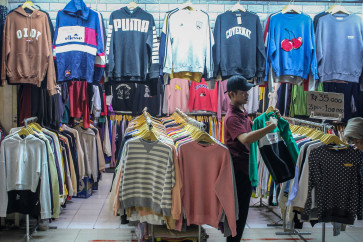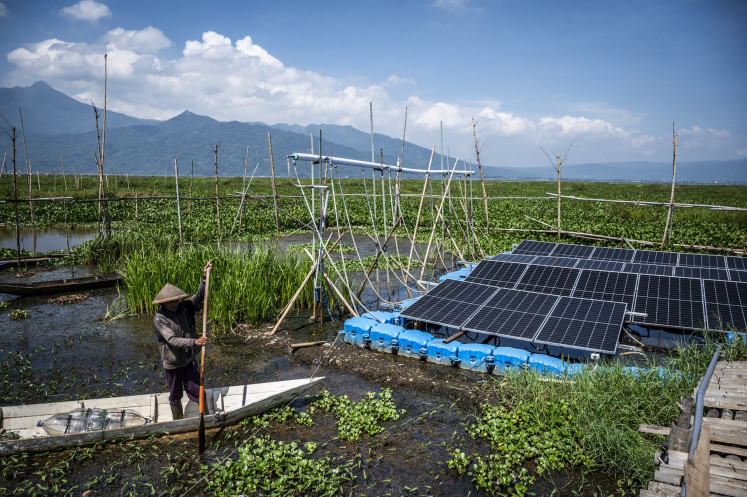Popular Reads
Top Results
Can't find what you're looking for?
View all search resultsPopular Reads
Top Results
Can't find what you're looking for?
View all search resultsExecutive Column: Discretionary spending to drive insurance purchase: Manulife
Indonesia continues to lag behind its Southeast-Asian peers in terms of insurance coverage, with gross domestic product (GDP) penetration of only 1
Change text size
Gift Premium Articles
to Anyone
I
ndonesia continues to lag behind its Southeast-Asian peers in terms of insurance coverage, with gross domestic product (GDP) penetration of only 1.77 percent being markedly lower than Malaysia's 4.8 percent, according to data from Swiss RE.
However, in an interview with the The Jakarta Post, Manulife Indonesia CEO and president director Chris Bendl said that discretionary spending for insurance products would see a rise alongside income increases ' a boon for insurers in the country. Below are excerpts from the interview:
Question: How do you see the growing need for insurance and how do needs vary across different market segments?
Answer: Broader economic growth is driving people's awareness of financial products ' and not just insurance.
Once people have their food, clothing and housing needs taken care of their thoughts are directed toward their children's education and their retirement.
There are four segments that are important to us ' mass market, young family, established family as well as affluent retirees and business people.
Each niche has its own priorities and our efforts are focused on fulfilling them.
The insurance needs of affluent retirees tend to be more directed toward health insurance rather than life because their children are no longer dependent.
They already have investments and their homes are already bought outright, so they are more likely to be looking into mutual funds, fixed incomes, money markets and perhaps equities.
However, younger families need life, health and accident insurance because they have dependents and if they are the principal wage earner, the assurance that the fees for their children's education will be covered is an important priority.
And yet, these families often do not have the accumulated assets to pay for everything.
How are you fulfilling the need of the various segments in the market?
We probably have less than 50 products.
A subset of approximately 20 products, like mutual funds and tax advantage products, are sold to high-net worth people.
We sell the rest to the middle and family segments.
As an insurance company, we cannot be everything to everybody.
We have to find segments in which we are competent and can do better than our competitors.
There must also be a clear need from customers.
We feel that focusing on health, education and retirement captures the most common needs of society. We differentiate on the level of service.
We also have to adapt the service model with the way we sell.
We sell some products through banks because they can handle the claims.
Some of our bank partners ask for different things because they have different client bases.
We also guide our agents to a small group of five to six products and we utilize telemarketing companies as well.
Over time, insurance in Indonesia will get more specialized and we will have to take that into consideration.
What would you say is the key challenge for insurance businesses domestically?
For over 15 years in the US and Canada, Manulife has done surveys to measure attitudes and perceived risks on retirement and savings.
We have recently done one in Asia, which included Indonesia.
Here, we interviewed people who have monthly incomes of Rp 4 million [US$352] and above, this segment represents 65 percent of the population.
One of the fascinating things that came through loud and clear is that people are looking for independent advice on what to do [financially]. This shows a very strong need for banking products.
The key is distribution ' being able to personally interact with customers in their preferred way whether it be a bank branch or the Internet.
People need to talk to someone who can help provide solutions, as opposed to just pushing a product or idea.
People also find it important to take into consideration input from their spouses or family when making decisions.
We have tried to make our sales team aware of the findings so they can be more effective with customers.










